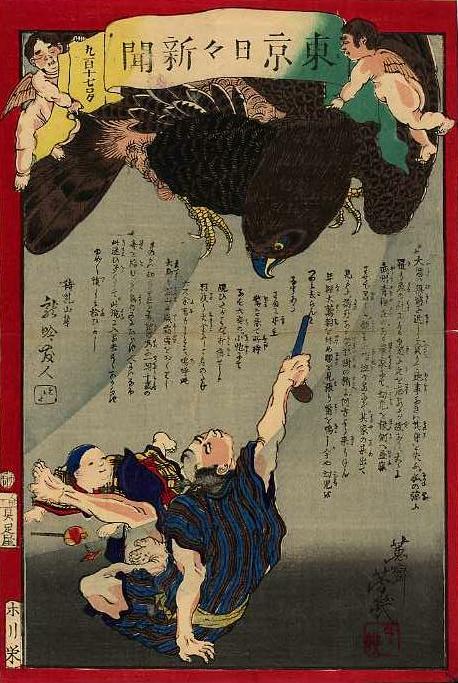Commentary
Ome in Bushu reflects 武州青梅 (Bushiu Awome, Bushū Ōme), now part of Ōme city in Tokyo prefecture. Bushu was otherwise called Musashi province (武蔵国 Musahi no kuni).
small arm reflects 小砲 (shō) glossed as てっぽう (teppō), which would be written 鉄砲, meaning "iron barrel" or "gun". A "taihoō" (大砲) was a cannon or other kind of artillery piece. A "shō" (小砲) was a small arm of some kind -- in this case a six-shot (六発 rokuhatsu) revolver.
1 jō (丈) was equal to 10 shaku -- hence about 3 meters, as one shaku (尺) was about 30 centimeters. The wingspan was thus over 3 meters, and the body was nearly 2 meters.
Foot of Matsuchiyama (待乳山麓 Matsuchiyama fumoto). Matsuchiyama was a small hill west of the Sumida river within the territory of Honryuin (本竜院), in Asakusa, in present-day Taito ward in Tokyo. Honryuin is a branch of Asakusadera (浅草寺), the main temple in the area, which is formally called Sensoji (浅草寺). Shotengu (聖天宮), its principal hall, stands on top of the hill. The temple has close associations with the "flower and willow" (entertainer and courtesan) world. (Adapted from Kojien among other sources.)
